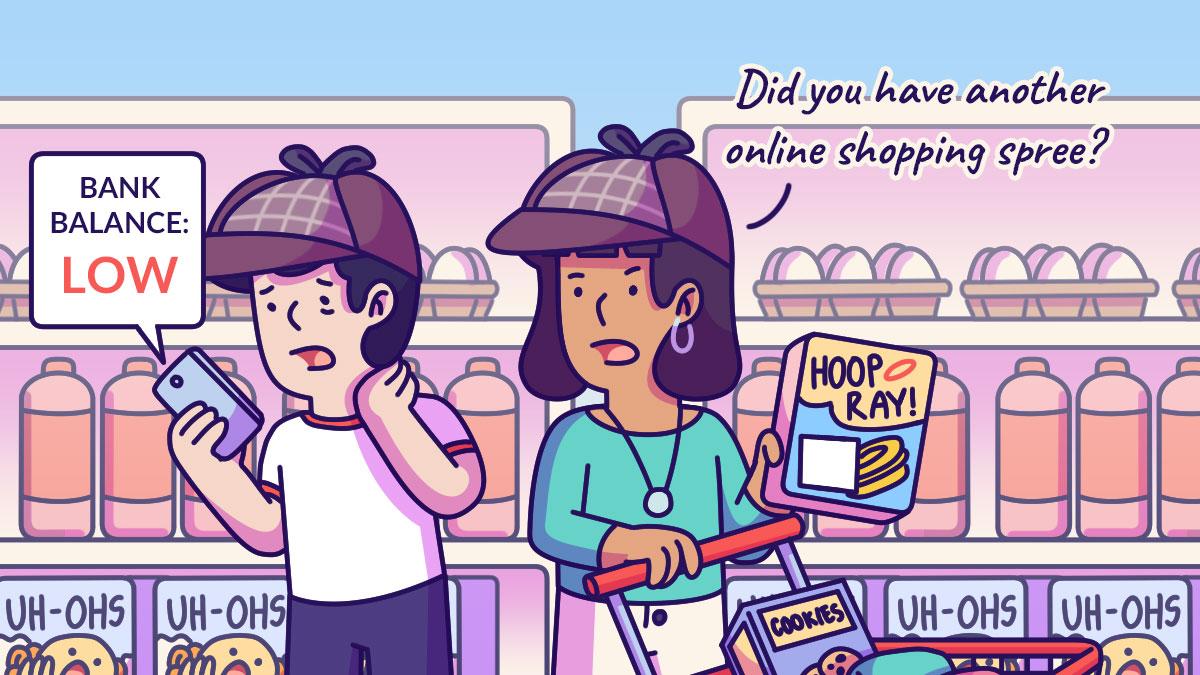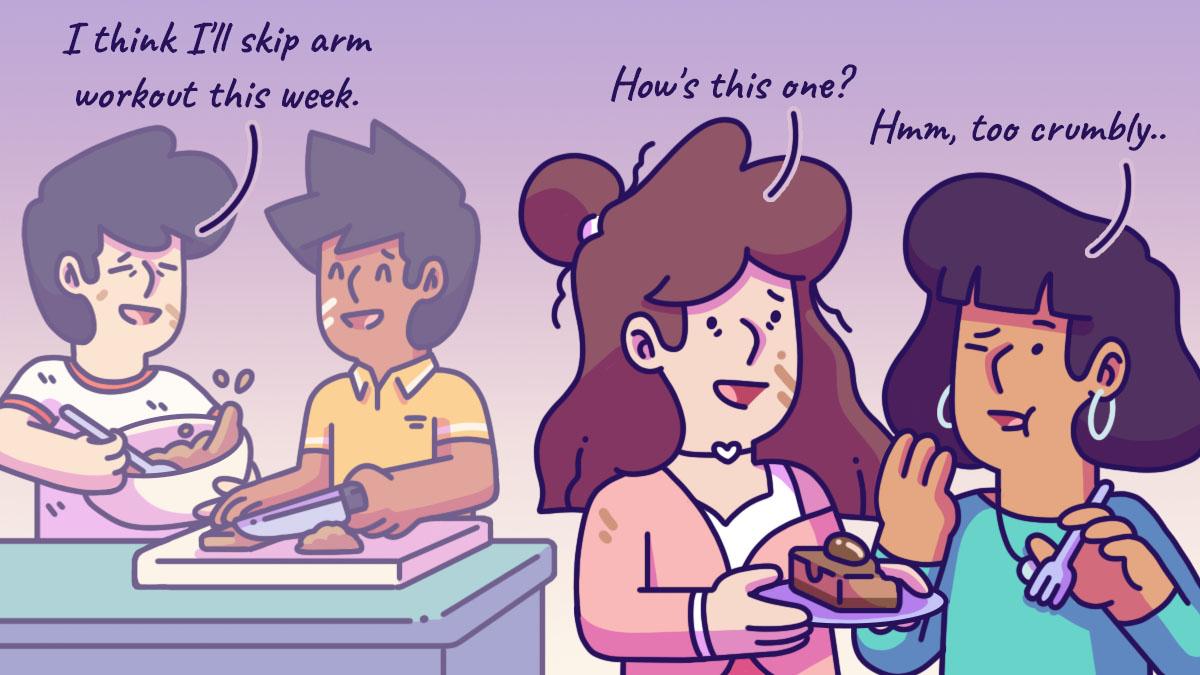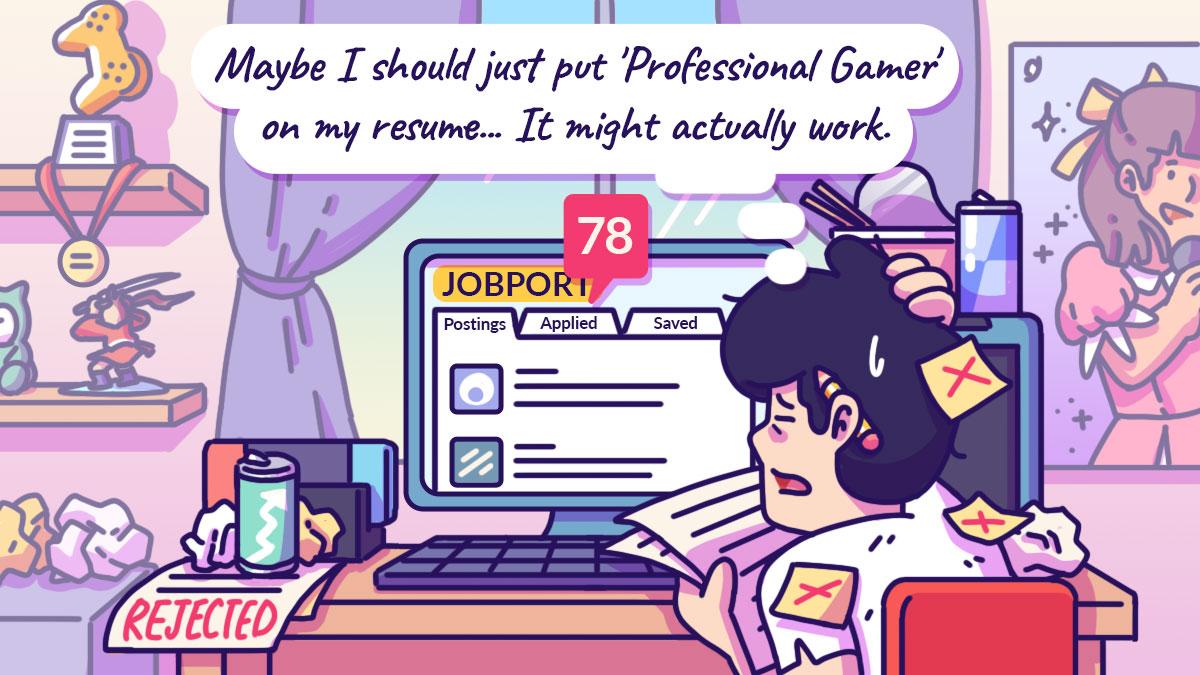If you’re unlucky enough to be blindsided with a retrenchment, how can you even begin to think about next steps, when you’re fighting off waves of anxiety as you clean up your work desk?
For 25-year-old Alyssa (not her real name), her retrenchment came suddenly — but she said that it had been expected. “The company had been struggling ever since COVID-19 hit, and our physical stores were closed,” she said.
How her retrenchment happened: “The managing director broke the news to us during a company town hall over Zoom, at 11 in the morning. They said, “If you receive an email within half an hour of the meeting ending, it’s you.” Right after that, my team started panicking, and then I received an email from HR stating a meeting time. I called my manager and she was shocked — she herself didn’t even know who they had chosen.” “I was mostly just shocked. I tried to be positive about it,” she told me, reflecting that she didn’t have “responsibilities” that other colleagues did, like mortgages or children. “But honestly, I was probably just trying to make myself feel better about a shitty situation that was out of my control.” With most crises in life, it’s best to approach big problems step-by-step — we’re going to break down retrenchment to three distinct phases — and the single most important thing you have to know to survive each phase.
- Phase 1: Freshly unemployed
- Phase 2: In-between jobs
- Phase 3: Finding a new job
Phase 1: What Are Your Rights?
So you just got the marching orders. Retrenchment basically guarantees that you’re going to lose your source of income, and that’s akin to being thrown off a sinking ship, onto a life raft. It would be wise to scrounge up as much resources (read: money) from said sinking ship before you’re cast away. If you don’t have an emergency fund, whatever you can gather up will go a long way to keep you financially afloat as long as you can in between jobs. So here’s a quick rundown of what you’ll get according to the Employment Act, and our Tripartite Guidelines:- You are entitled to your salary and leave days — prorated to the last day of service.
- Retrenchment benefits (i.e. compensation) might be provided to you if you’ve been around for more than two years — this is non-taxable and not liable for CPF deductions.
- If you’ve been at the company less than two years, then you’ll only get retrenchment benefits out of goodwill (according to the Tripartite Guidelines, this is known as ‘ex-gratia payment’) — this will be taxed and deducted for your CPF.
- However, according to the Tripartite Guidelines and MOM, Singapore does not have a legislated mandatory retrenchment benefits scheme. What this means is that it is up to your soon to be former employer if they want to pay out any benefits — if any at all. Hence, goodwill.
Phase 2: Grants to Stay Afloat
After anger and denial subside, acceptance will come. By this, we mean accepting financial assistance. As independent adults, it can be a tough pill to swallow to admit that you need a handout — but hey, everybody needs a little help from time to time! It’s best for us to grab onto any lifeline during one of the most painful and uncertain phases of retrenchment: being in between jobs. Consider that it can take up to 6 months to find employment. No doubt the most helpful government grant out there for those who’ve been hit by retrenchment is the COVID-19 Recovery Grant (CRG), a new grant that has replaced the previous COVID-19 Support Grant (CSG). The CRG is eligible for those aged 21 years and above, who have lost a job after 23 January 2020. If one is found to be eligible, they will receive relief in the form of up to $700/month for three months, to aid them in their day-to-day expenses amidst a job search. Not sure if you’re eligible? Use the Eligibility Checker here to find out what you qualify for. A 24-year-old professional, Vicky (not her real name), has been struggling to find employment again after the pandemic – and thankfully managed to benefit from the CSG back when it was still open for applications. “The job hunt burnout is real, so you have to definitely take advantage of whatever resources the government provides,” she said. “But the application process was easy – you only have to submit three documents, along with proof to show that you were fired because of COVID-19 or put on no-pay leave for three months or more.” It took Vicky two weeks to receive confirmation that the grant had been approved, and another two weeks to receive the payment in her bank account. Of course, eligibility for a scheme like the recent COVID-19 Recovery Grant doesn’t just apply to everyone. CRG recipients should have lost their jobs after 23 January 2020, and have to be actively searching for a job or attending a training programme to qualify for the grant.Phase 3: The Road to (Re-)Employment
Every jobseeker’s bread and butter is the job portal — and there are multiple platforms online that one can use to locate their next (hopefully long-term) stint. Vicky has been on the job search for the past three to four months. She offers her advice and experience on where to go for different job opportunities, for example, taking advantage of the gig economy to earn some income to keep your wallet afloat. “Ad hoc jobs you’ll usually find on FastJobs the easiest, while longer term and maybe contract roles can be found on JobStreet,” she said. “But I also noticed that MNCs and bigger companies may outsource to recruiters who put up ads on different websites; you’ll stand a better chance of finding something by scouring all of them!” There are also professional conversion programmes by the government to help unemployed individuals locate suitable opportunities ASAP, like the SGUnited Mid-career Pathways Programme. Jobseekers can also utilise MyCareersFuture, a national job portal, to locate more opportunities (for Singaporeans and Permanent Residents only). The portal also features a plethora of SGUnited job opportunities, which can be filtered through easily in your search.Life Goes On: Introducing the LifeSG App
What we have covered here are the most important (in our opinion) things to know for each phase of retrenchment, but there’s much more help out there. For example, there’s the SGUnited Skills (SGUS) programme that allows you to receive $1,200 in training allowances while you study full time in order to transition into up-and-coming industries. With the Singapore government committing $193 billion to help keep the economy afloat, there’s a slew of programmes available — and we know it can get a little overwhelming and hard to navigate, as a result. An answer to get all information in a single place is the LifeSG app, which contains three employment support modules consolidating all the information you’ll ever need for your job search and getting through retrenchment in one place. (There are even dedicated information pages for struggling freelancers!)How to Log In
All you need is your SingPass credentials; there’s no need to sign up for another account to access the LifeSG portal.What You’ll Find Inside: Resources and More Resources
There’s no need to open up fifty tabs on Google Chrome anymore as you try to get a grip on things (good news for us and our already frazzled brains). Inside the app, you’ll find different articles containing all the information you need on, say, the available grants that you can tap on as a retrenched individual. There are three points of interest for the jobseeker here involving the following employment support modules, which can be found right away on the main LifeSG home page:
- Financial Support for Workers and Self-Employed


- Retrenchment Benefits and Measures

- Support for Job Search
















